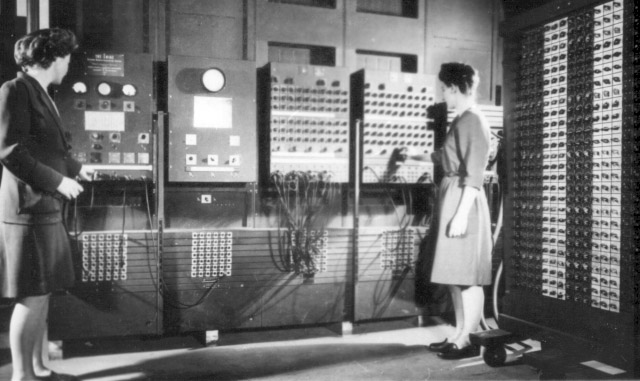 In the 1960s, computer programming was still viewed as a lucrative career choice for many young women. Cosmopolitan magazine at the time even ran an article entitled “The Computer Girls”, which depicted the field as a better opportunity for women than many other industries. The job was seen as being “easy for women” and was considered, alongside teaching, to hold the most opportunities for females.
In the 1960s, computer programming was still viewed as a lucrative career choice for many young women. Cosmopolitan magazine at the time even ran an article entitled “The Computer Girls”, which depicted the field as a better opportunity for women than many other industries. The job was seen as being “easy for women” and was considered, alongside teaching, to hold the most opportunities for females.
This trend continued until the mid-1980s, when the number of women taking undergraduate computer science and working in white-collar IT positions peaked. There has been a steady decline ever since.
So what changed? Sadly, the reason for our current male-dominated programming stereotype was that the field began to be viewed as “difficult”. Before computer programming matured, it was seen as a low-skill, clerical job — akin to filing and typing. It was assumed that the “real brain work” went into the hardware side of things, which was regarded as a very masculine profession, and the software side comprised simple repetition and basic understanding.
However, when software programming emerged as a logistical discipline that requires complex puzzle-solving, women were immediately discouraged and their competencies questioned.
It is largely due to the history of how the perception of the field changed that there are so few female programmers today. It is important to note, however, that the discipline didn’t change — only the way it was viewed was.
Unfortunately, perception still plays a huge role in the industry. Computer programming is assumed to be dominated by a specific stereotype, which has become strongly embedded in people’s psyches. Viewed by some as belonging to a group of socially awkward male “geeks”, the field of computer programming has remained unappealing to females worldwide.
According to the National Centre for Women & Information Technology, only 18% of all computer science degrees were received by women in 2010 in the US, and only 25% of the computing workforce were made up of women in 2009. As of 2013, only 20% of all US computer programmers were female.
Similarly, South Africa follows this trend. In terms of employment equity, the local ICT industry is said to be steadily becoming more representative in terms of colour (the number of black ICT graduates outdid the number of white graduates in 2002 and there are currently more than twice as many black than white graduates), but not in terms of gender (male ICT graduates still exceed females by about two to one).
However, some ICT companies incorporate female empowerment as part of their vision. At MIP, the majority of female staff are computer programmers. Out of the 80 females working at the company, 47 are programmers (59%).

Although an exception to the rule, these figures are representative of the possibility of a computer programming female workforce. These statistics make it clear that this field is not, and should not be, male dominated.
Two of our female programmers, Claudia Kremnitzer and Carol Badenhorst, have been in the industry for a number of years, and both feel that the growing number of women coming into the industry is representative of the fact that programming is increasingly being seen as a good career choice for both genders.
Badenhorst became interested in computers as a potential career track after having been invited to do computer science as a seventh subject in high school in the 1980s, while Kremnitzer attended a software development course after school. Both believe that programming as a career choice offers flexibility that many other occupations lack, making it even more attractive to women who are concerned about balancing the needs of their families with their jobs.
Changing stereotypes takes a long time, and a great effort must be put in to changing perceptions, but this does not mean young women should simply discount the possibility of a career in computer programming. With more companies leading the way, young women can be exposed to a greater number of female mentors and, in time, will come to realise that programming is not only a viable option, but a very lucrative and satisfying career choice.
- Richard Firth is chairman and CEO of MIP




